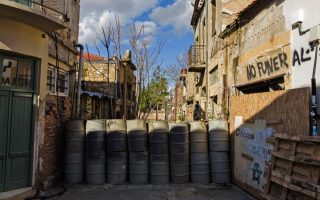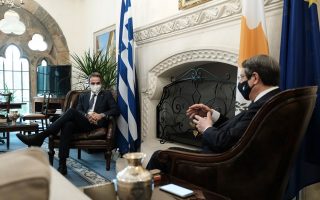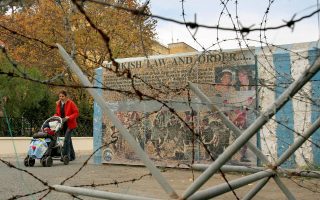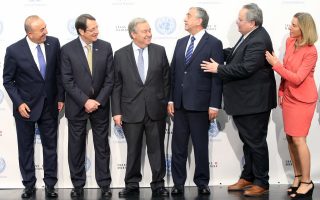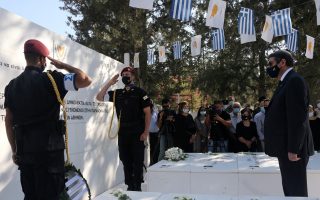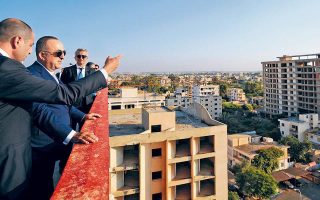The crow of Varosha
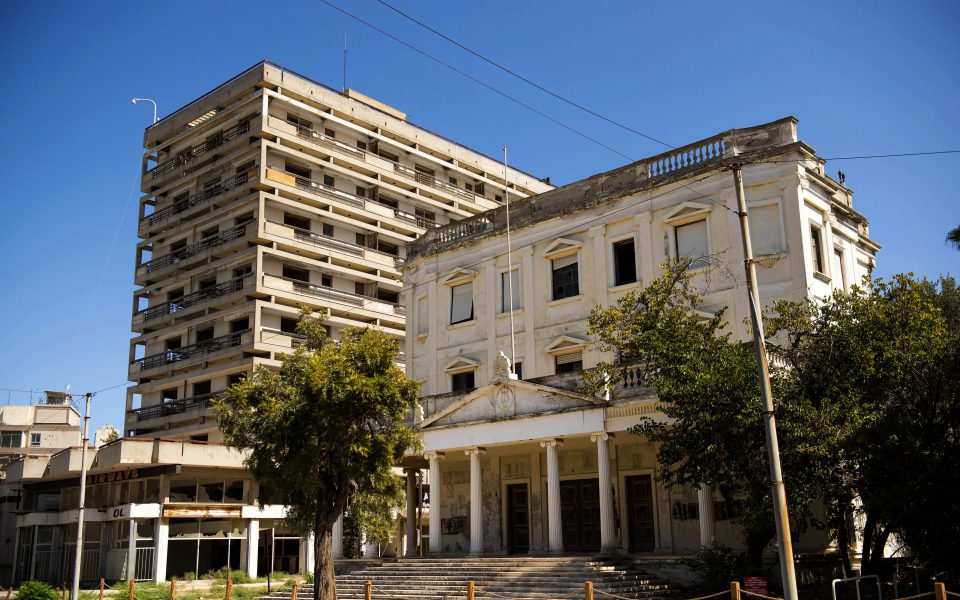
Only the crow high on the balcony of the abandoned apartment block next to the white, neoclassical Greek Women’s Lyceum spoils the festive atmosphere in the “Tea Park” set up in the Boys’ High School yard. On both buildings, the Greek names on the facade have been covered or painted over. Huge Turkish and Turkish Cypriot flags hang over the high school’s closed entrance. The crow caws, monotonously, tirelessly, drowning out the twittering of the tourists sitting around plastic tables, in the yard where the pseudo-Sultan took his tea during his victory lap in the hostage city a year earlier. A Famagusta Municipality minibus traverses the town in a cloud of diesel fumes, on the freshly laid asphalt on the road which runs behind the looted high-rises on the beach front, passing among the houses that have sunk into the swamp of time. Their owners left for a few hours in mid-August 1974 and have still not returned. Their town is sealed off to everyone but Turkish troops. At the end of the ride, Varosha’s latest attraction: the beach where, last November, Turkish President Recep Tayyip Erdogan staged his picnic of arrogance in the rain.
Other than the crow’s cries and a Turkish soldier’s shouts whenever a visitor stops to photograph a derelict building with the UN flag, Varosha is buried in a silence so absolute that it seems every drop of life was sucked out of the place decades ago.
The beachfront with the abandoned high-rises is familiar from photographs that turn up in the international media now and then. But Varosha, the Greek Cypriot suburb outside Famagusta – in which 30,000 people lived and thousands more visited daily to work – surprises the visitor with the beauty that it retains. The abandoned and thoroughly looted buildings, the businesses and houses, keep something of the grace of a prosperous and vibrant community that died on its feet. The shop signs, the traffic lights at empty intersections, the parking meters where there are no cars, underline the total lack of life. The frenzied development which saw the suburb acquire 10,000 hotel beds in a few years before the catastrophe did not infect the town’s commercial center to the same extent. Its destruction came with the Turkish invasion and the 47 years of occupation that have followed. Without windows or doors, swallowed by vegetation, the buildings are defenseless against the weather and time.
Those who were young when they fled have aged far from their homes, their elders have died. The town which Turkey has held as a “bargaining chip” is being turned into an “open-air museum.” Tourists rent bicycles or scooters at the gate in the fence, they enjoy ice-cream in a crime scene, they photograph themselves smiling against a backdrop of ruin. “The Turks come and gloat over what they have done,” comments a Turkish Cypriot friend who still hopes for the island’s reunification as a bi-zonal, bi-communal federation.
Silent and paralyzed, Varosha does not measure only the depth of silence, it records more than the violence of invasion and occupation, it stands witness to the time that has passed and continues to pass. The world has moved on, everything changes, we are in 2021, yet the Cyprus problem remains unsolved. And Varosha is the symbol of inertia, of devotion to endless processes, of growing so accustomed to the wound that it becomes ever more difficult to heal. Varosha remains hostage to Turkey and to the inability of the two sides on Cyprus to come to an agreement with each other. Whenever a partial solution was proposed, one that would have included Varosha, it crashed onto the dogma that only an overall solution is acceptable.
International dynamics are pressing Turkey and the Turkish Cypriots but this has not led to a solution. So far. Two UN resolutions (from 1984 and 1992) demand that Varosha be inhabited only by its original residents, under UN administration. The Turkish side has refused to implement them. But after 1995, when the European Court of Human Rights adjudged a large sum in compensation to Greek Cypriot Titina Loizidou for her being deprived of her property in the occupied territory, Turkey has been under pressure to find a solution, as the fenced-off area of Varosha is under the Turkish army’s control. Therefore, Turkey set up an Immovable Property Commission to which Greek Cypriots can turn, instead of the ECHR. Returning property to Greek Cypriots, or letting them sell it to someone else, will relieve Turkey and the Turkish Cypriots of a heavy cost. That is why Erdogan and his man in the occupied territory, Ersin Tatar, are threatening to “open” 3.5% of Varosha to settlers.
For about 10 years, members of civic society on both sides of the Green Line have been working for a solution. Mustafa Akinci, former leader of the Turkish Cypriots, proposed Varosha’s return to its owners under UN administration, in exchange for the opening of the Ercan/Tymbou airport to international flights. The Greek Cypriot side insists on an overall solution – a solution which it has not seemed to be pursuing with zest lately.
Meanwhile, Varosha continues to decay and to be threatened by the island’s decisive division. Those who hope for a solution are disappointed. They fade away. The impasse demands a solution.
